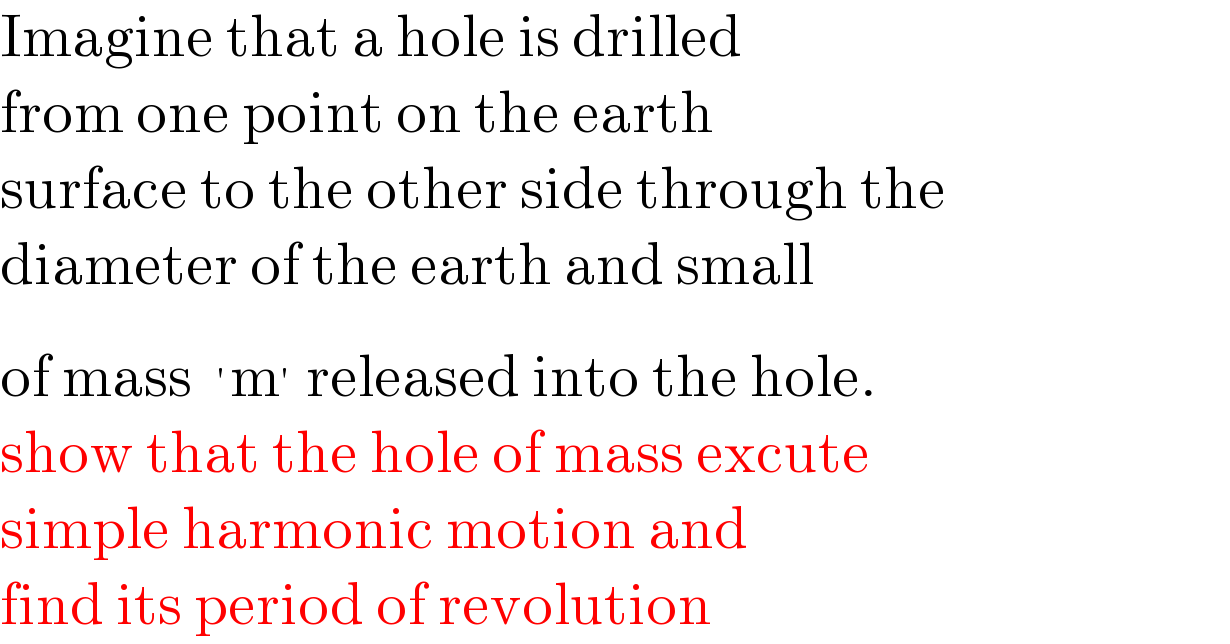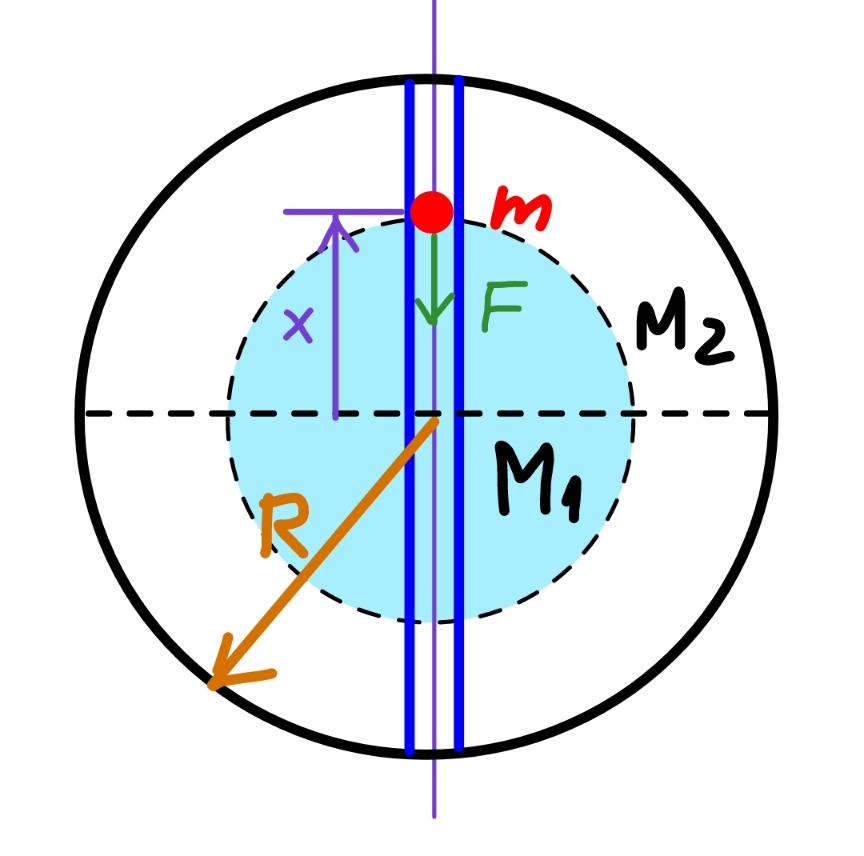
Question and Answers Forum
Question Number 177240 by peter frank last updated on 02/Oct/22

Commented by JDamian last updated on 02/Oct/22
What is "the hole of mass"?
Commented by mr W last updated on 02/Oct/22

Answered by mr W last updated on 02/Oct/22

Commented by mr W last updated on 02/Oct/22

Commented by peter frank last updated on 02/Oct/22

Commented by mr W last updated on 03/Oct/22

Commented by peter frank last updated on 03/Oct/22

Commented by Tawa11 last updated on 03/Oct/22

